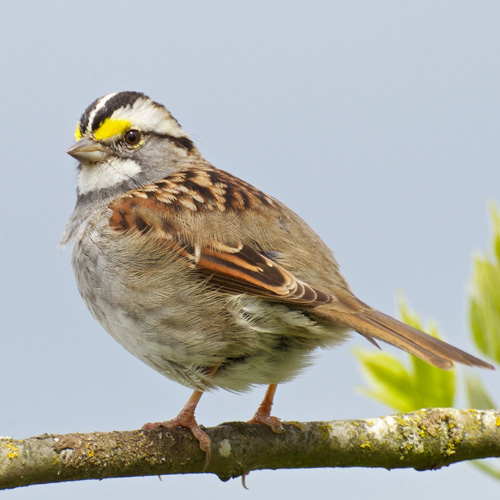Habitat
These sparrows migrate through, and winter in, similar edgy habitats with dense understory, including suburban yards and parks, often near water.
Behavior
White-throated Sparrows usually forage on the ground in loose flocks, kicking the leaf litter back with both feet to uncover food. They will come to bird feeders if there is cover nearby. During the breeding season, they sing from trees, although they usually do not sing from very exposed perches. The two color morphs have a number of interesting behavioral differences. Either sex can be white-striped or tan-striped, but they usually pair with a member of the other color morph. Pairs of tan-striped females and white-striped males nest in more open forest and forest edge areas. Pairs of white-striped females and tan-striped males tend to nest in denser forests. Pairs of white-striped females and tan-striped males usually form pair bonds more quickly than the reverse combination. White-striped birds tend to be dominant. White-striped males are usually more aggressive and sing more than tan-striped males. They are also more likely to seek extra-pair copulations than tan-striped males. White-striped females also sing, but their tan-striped counterparts usually do not. Tan-striped adults tend to provide more food and care for the young than white-striped birds.
 |
| Adult |
No comments:
Post a Comment